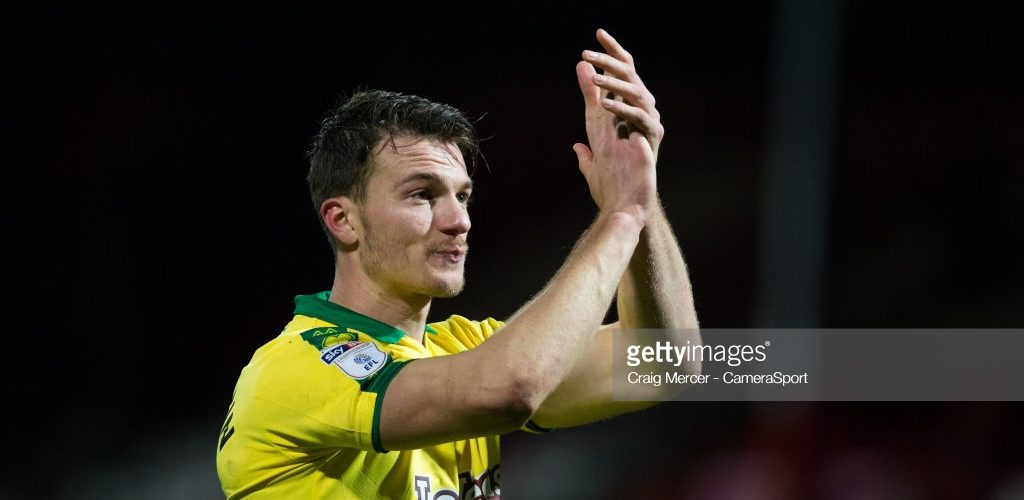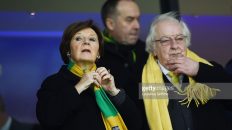Defensive solidity is something which hasn’t been accredited to Norwich City sides of years gone by.
This characteristic is often described by coaches as being the easiest part of the game, yet in reality, it has caused Norwich to stumble over their own feet on previous occasions. On August 26th, in the blazing sun of the capital, Norwich capitulated in front of a travelling support feeling a newfound sense of optimism at Millwall.
The protagonists of that day no longer walk the corridors of the club.
In hindsight, that day may prove to be pivotal in the progression of this philosophy. Following the mauling at the paws of the Lions, Daniel Farke has opted for a more pragmatic and dogged approach. This adaptation and differentiation in regards to approach has seen Norwich conquer sides higher in league ranking.
Middleborough, Reading, Ipswich, Sheffield United and Bristol City, these performances epitomise Norwich’s newfound pragmatism and ability to successfully negotiate fixtures away from home.
Last season, Norwich were conceding goals regularly, but frequently was the ball smiting the back of opponents net. This season, the issue has seemingly flipped. This free flowing and scoring Norwich City side has become relatively profligate in front of goal, but the transformation in the opposing third of the pitch should be duly noted.
Since that torrid capitulation at the Den, Norwich has been a wholeheartedly resolute defensive unit. Admittedly, there have been mistakes, but when contrasting this defensive line up with that of years gone by; there is an overriding sense of calm as they clear the ball. Stuart Webber spoke about the defensive frailties and the need to overturn that and, in Farke, Norwich have discovered a tactically adept coach capable of doing so.
The short term fix was to deploy Alex Tettey -a man previously written off by Farke- as a screener to the back four. The Norwegian role’s was to break up the play and give the ball to another creative outlet.
As for the back four itself, positionally they were closer in regards to distance and this shape was dependent on more defensively minded full backs. This steadied the ship temporary, but Norwich’s tactic of dogged defending became reliant on a piece of magic to win games.
Enter the back three.
When Farke stepped foot into the corridors of Carrow Road, it was clear his progressive and tactically aware process of coaching would require tweaking to make it withstand the rigours of the Championship. Initially, this three at the back was deployed at Craven Cottage, but it was clear it required adapting.
This was reassembled but now with defenders who have now become the substructure of all of Norwich City’s positive play.
The characters of Klose, Zimmermann and Hanley have provided Norwich’s backline with a sense of equilibrium. A balance which was so desperately needed provided by operators who evidently have an enjoyment for their craft.
Norwich is now a settled outfit defensively.
Naturally, this extends further to the tremendous Angus Gunn, who was exposed enormously during the embryonic stages of the season. The depleted backline left him horribly vulnerable at Villa Park whereby his saves ensured Norwich weren’t royally embarrassed.
The emergence of Christoph Zimmermann has been truly astonishing.
The German giant has become a mainstay in the City line up. His presence and improvement in regards to how he handles his physicality alongside his aerial dominance has been superb to consume. It’s amazing to remember how much improvement supporters have witnessed in six months. From the German fourth tier to Norwich’s first choice, he continues to develop and improve.
His obvious passion and understanding of the ethos makes him a favourable figure amongst supporters, but he has become a necessity to Norwich’s defensive solidity. His positioning is flawless, his leadership astounding and his presence is irreplaceable.
Alongside the rookie, Norwich has experience in Grant Hanley and Timm Klose. The formers arrival appeared to be in the face of desperation, yet his authentic and no nonsense approach to defending has seen him lauded by Canaries supporters. Hanley offers a reliability and aerial dominance which hasn’t been seen in NR1 since Malky Mackay and Craig Fleming donned yellow and green.
His style may not centred on aesthetic nor does he pose the passing range of his counterparts, but he is a player who required no adaptation period. Hanley’s physical presence and desire to defend has been commendable, and has proved to be an inspired addition who has contributed to the newfound resilience defensively.
Captain material?
In Timm Klose, Norwich has an international defender who has improved after a tricky first season in the Championship. After Daryl Murphy took him to school at Portman Road, Klose now understands the physicality and demands of the division and has the skillset necessary to be a excellent operator at this level.
Farke deserve accolades for the manner in which he has constructed this back three. He has rectified the problems this club suffered for the entirety of the last campaign. Goals were being conceded at an alarming rate and now he captains a much tighter ship.
With these protagonists, the narrative has changed. Next, Farke must rectify the issues at the top end of the pitch, which, based on his previous evidence, he has the ability to do so.
This is sustainable. This is the new model.






